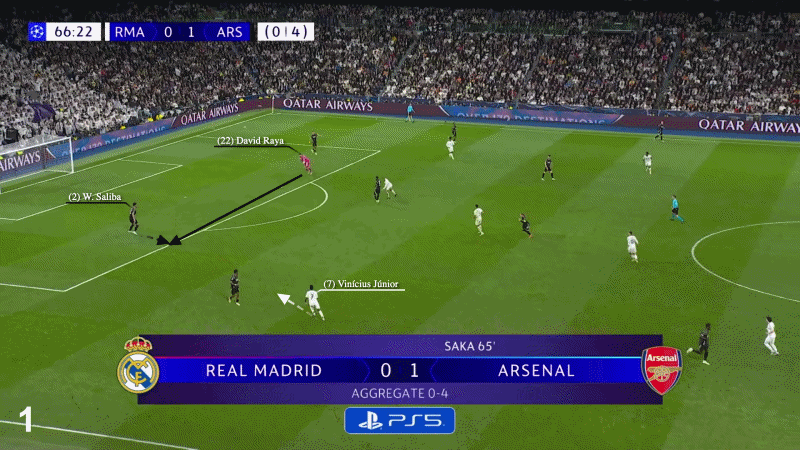
The past two weeks have brought more attention to an aspect of Arsenal’s approach that usually runs like clockwork: their build-up play.
It all began with Vinicius Junior’s consolation goal for Real Madrid at the Bernabeu as he pounced on a loose touch from William Saliba to score. A week later, Crystal Palace’s Jean-Philippe Mateta benefited similarly, with David Raya well out of his goal after Saliba misplaced a pass.
Advertisement
After the 2-2 draw, Mateta told Sky Sports: “When I started on the bench, I watched the first half and he (Raya) was very high. When I came on the pitch, I knew if we won the ball high, he would not be in his goal. I tried and I scored.”
Similar mistakes occurring just before Arsenal faced Paris Saint-Germain in a Champions League semi-final caused concern for two reasons.
Firstly, how well would they be able to execute on their own terms? And secondly, going into the first leg, PSG had the highest percentage of high-intensity pressures (87 per cent) in the Champions League this season, meaning Mikel Arteta’s side would be under even more pressure than they were against Madrid or Palace.
Neither Mateta’s nor Vinicius Jr’s goals had serious implications for Arsenal’s season, but there is no doubt PSG would have noted them with interest.
Raya is coming towards the end of his second season in north London and Saliba his third as a regular starter. Both players have been in the positions they found themselves in when those goals were conceded numerous times before. On previous occasions, though, their execution was just better.
For Vinicius Jr’s goal, the angle of Saliba’s body is closed. He therefore doesn’t see the Brazilian hunting him down and it is harder for him to receive the ball and open out in one motion.
He is caught as a result of needing that extra touch, needing time that wasn’t available to him to make a decision.

Against Palace, he has the ball in a calmer situation, but he hesitates when Daichi Kamada applies pressure.
That quick change in the pace of the game when his foot is on top of the ball sees him ignore Martin Odegaard’s shout to find Raya again, and he instinctively shovels the ball when his body is closed off.
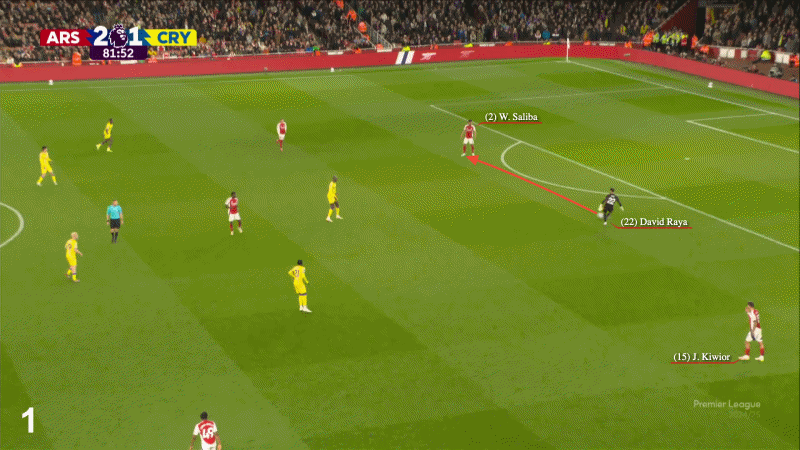
Already one of the most intense teams defensively in the Champions League, PSG’s pressing on Tuesday night would not have been borne solely of those two concessions. Even so, Luis Enrique’s team would have been encouraged to go for Arsenal whenever the opportunity arose.
For Arteta’s team, it was going to be about how they withstood that pressure, but their reaction was mixed early on. Already 1-0 down, they were looking for a foothold in the game, so retaining possession was important.
Below is a sequence when PSG are alert to Raya rolling the ball out to Jurrien Timber and react by quickly finding their shape. Ousmane Dembele is the one to lead the press, following Saliba. But the defender stays calm and he, Raya and Declan Rice pass their way out of trouble.
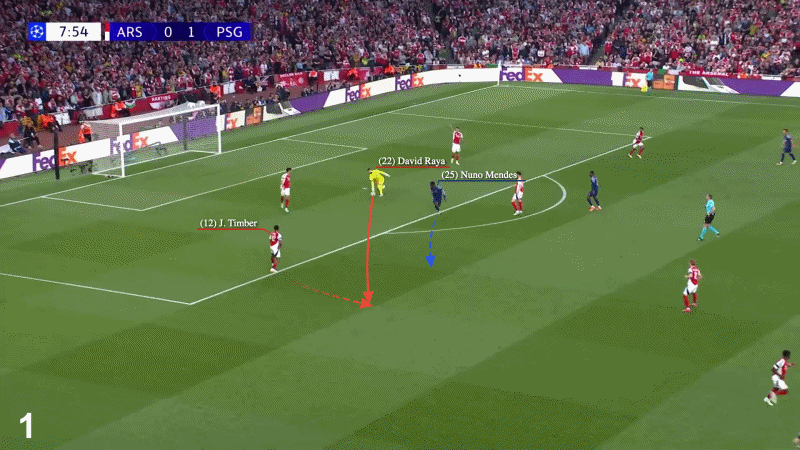
That patience, and the positioning of Myles Lewis-Skelly, created space for Rice to be found by Raya. From there, Rice switched the ball to Gabriel Martinelli, who won a corner and gave the stadium a lift.
Yet an example of why Arsenal have found themselves caught in these situations came just minutes later.
Advertisement
Saliba and Raya initially do well when PSG close off any central passing, but the defender places his foot on the ball once again after his goalkeeper tells him to go up the touchline. That gives Khvicha Kvaratskhelia the chance to challenge him.
Fabian Ruiz wins the next loose ball, which bounces off Martin Odegaard and into the path of Vitinha.
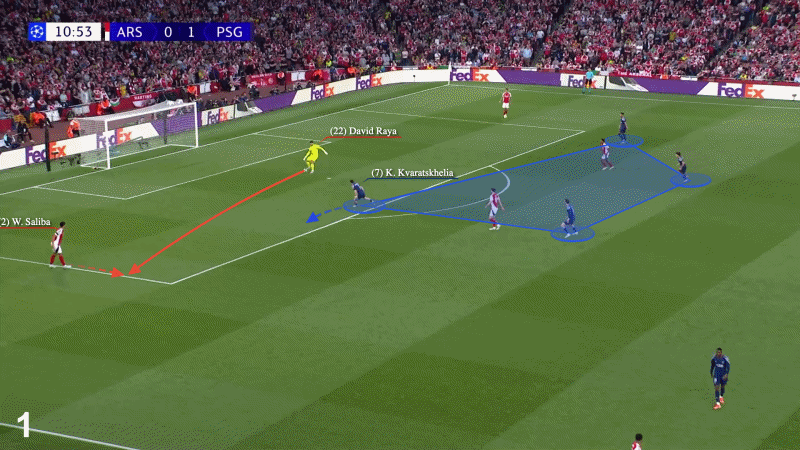
Mateta highlighted Raya’s positioning as something he was watching last week, but in reality, when Arsenal are in possession, they should remain in control.
It took time for Raya’s aggressive positioning to become palatable to those who watch Arsenal regularly, especially in stadiums, but the past 12 months have been relatively calm when he is on the ball outside his own box.
It is not uncommon to see the goalkeeper push up almost alongside Saliba, acting as another centre-back in build-up. Often, that sees Saliba’s partner, whether it be Gabriel or Jakub Kiwior, push wider to the left and allows for more passing angles through the thirds. The emphasis then falls on whoever is on the ball having clarity in what his next action is, which evidently wasn’t the case with Saliba in three of the four examples mentioned above.
For all the hysteria around the goals conceded against Madrid and Palace, this setup actually helped Arsenal through their first leg encounter with the Spanish club.
Early on, that structure with Raya pushing up and Kiwior pushing left made it easier for Lewis-Skelly to invert. Arsenal started their build-up with Saliba before transferring the ball to Lewis-Skelly, who, in turn, broke Madrid’s press before he freed Rice for a run into acres of space.
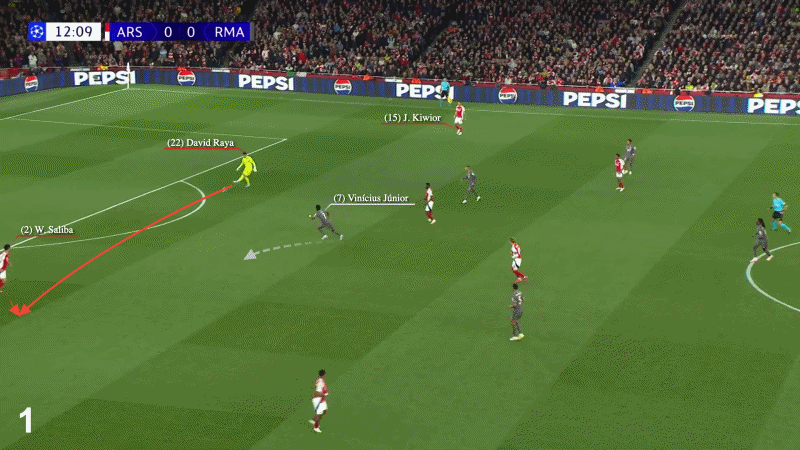
That was at 0-0 and continued throughout the game.
The back three structure was set almost in midfield early in the build-up for Mikel Merino’s goal that night. Thomas Partey was Raya’s progressive passing option this time and his touch around Federico Valverde opened up the pitch. Two passes later and Rice was storming into the Madrid half again before laying off to Leandro Trossard.
The ball moved from Trossard to Lewis-Skelly and back to Merino for the finish.
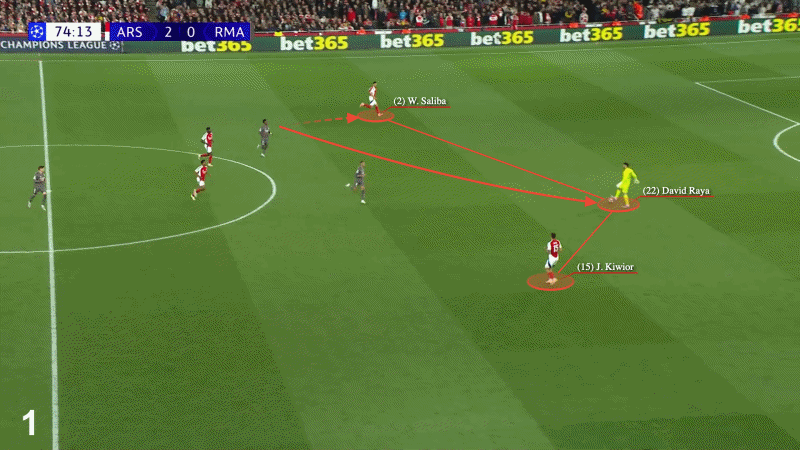
A factor that would have helped in the first leg against Madrid was the lack of running from the visitors’ front three. Arsenal finished that first leg with more possession than Madrid (53.4 per cent) but still made over three times as many high-intensity pressures (115) in the final third than their opponents (36).
Advertisement
Updated after the first leg, the percentage of PSG pressures that were high intensity is still the highest in the competition (now 86.6 per cent). To contextualise with raw numbers, they rank second in the competition for total high-intensity pressures in the final third (1,508) and first for high-intensity pressures applied across the pitch (4,791).
Enrique’s side proved those numbers are no fluke at the Emirates, but there was still a moment that showed Arsenal can exploit them with clean, crisp passing in build-up.
As the ball went back to Raya on this occasion, Dembele can be seen motioning across to Kvaratskhelia to push up. Both he and Desire Doue do so as Raya passes into Saliba.
The defender is aware of his surroundings this time and takes a good touch to evade the pressure before quickly finding Bukayo Saka on the halfway line.
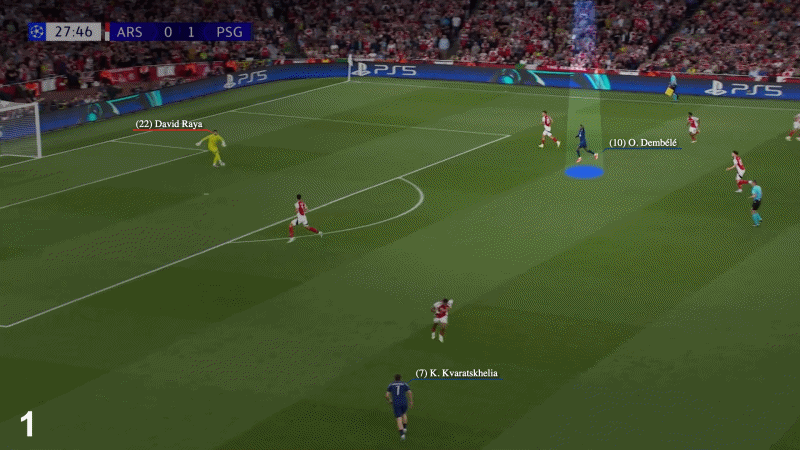
Saka lays the ball off to Timber, but the right-back decides to go backwards rather than forwards. Arsenal had broken through PSG pressure nicely in this instance and a bit more bravery could have had them on another attack.
Even if they did not go for it here, similar moments could present themselves in Paris. They just need to be present and precise enough to take advantage.
PSG’s intensity out of possession matched their quality in it in the first half on Tuesday. They showed control both with and without the ball in a way teams rarely do at the Emirates. But, with their deficit in the tie just the one goal, Arsenal have to go to Paris with the belief they can hurt them.
They will likely take encouragement from Aston Villa’s second leg win over PSG, although the dynamic is slightly different with that having been played at Villa Park. At least the game against Bournemouth at the weekend will give them an opportunity to familiarise themselves with these situations, with Partey back in midfield ahead of the second leg.
Advertisement
Arsenal may not look to play the exact same away from home, with their 2-1 win at the Bernabeu an example. Already 3-0 up in the tie at kick off that night, that match had a very different complexion.
But, rather than it being if Raya and Saliba pick up similar positions at the Parc de Princes, when they do, they need to be ready to execute more precisely.
(Top photo: Justin Setterfield/Getty Images)
This news was originally published on this post .




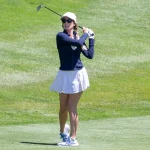

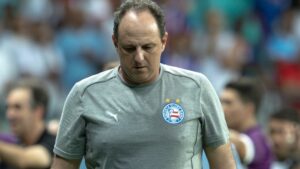
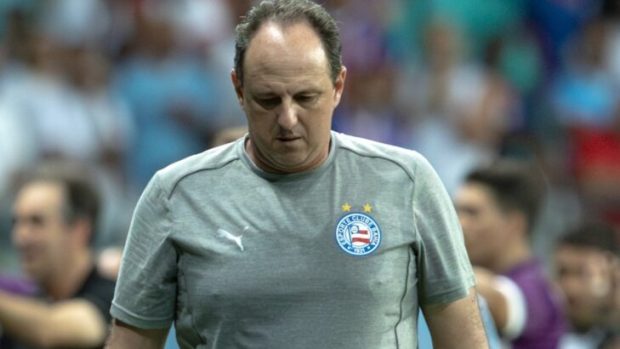
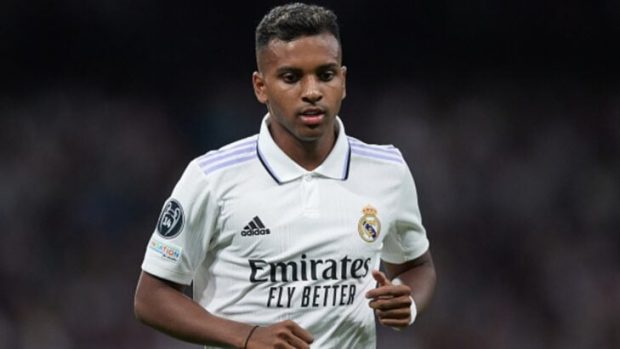
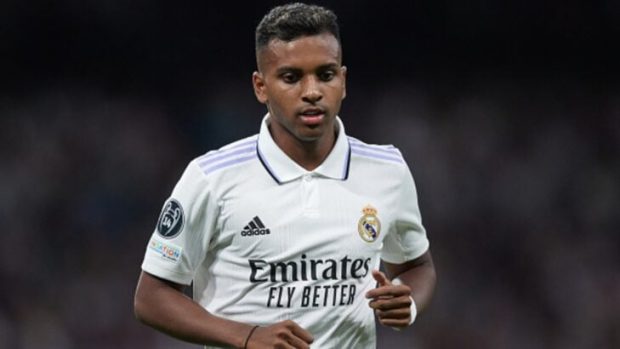
Be the first to leave a comment